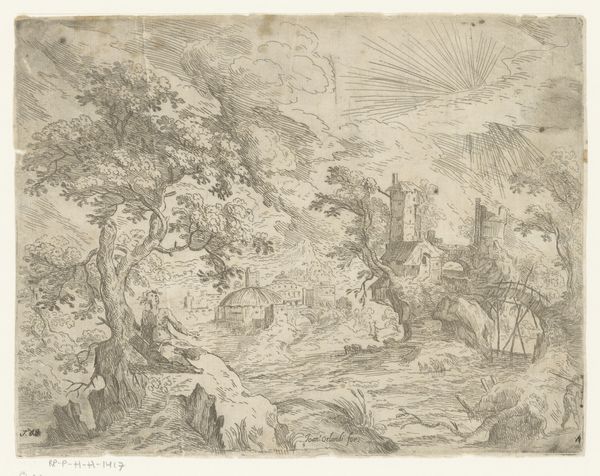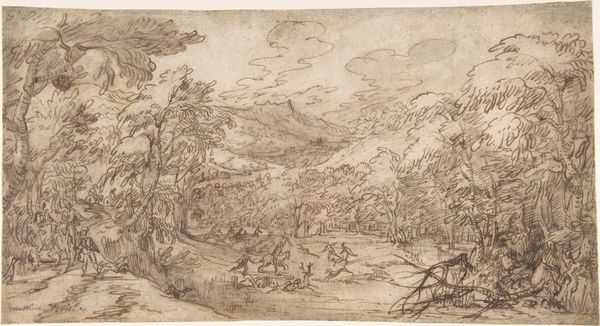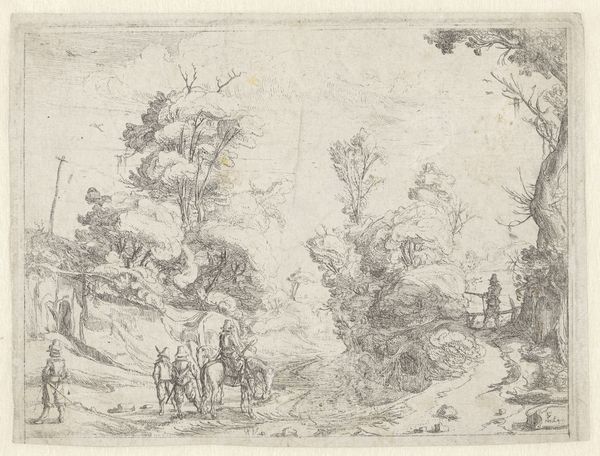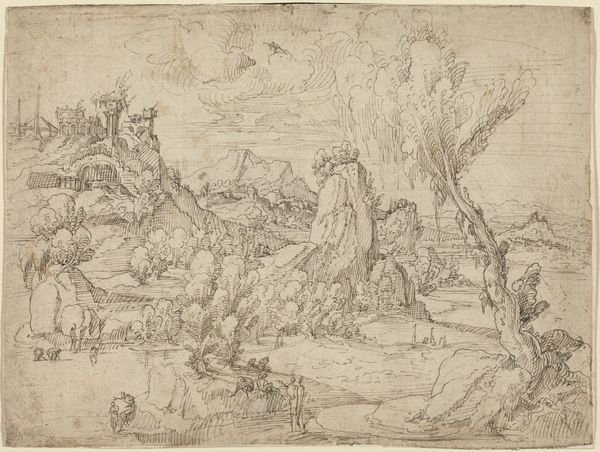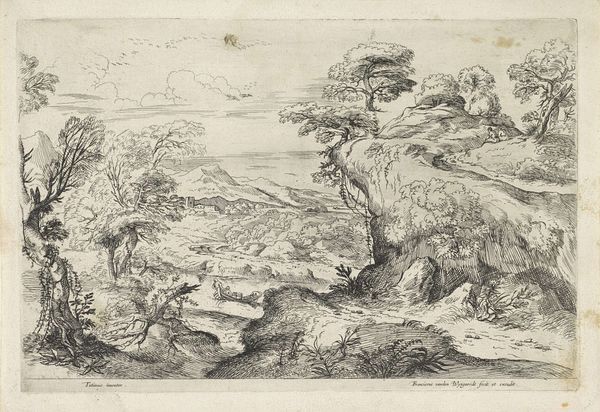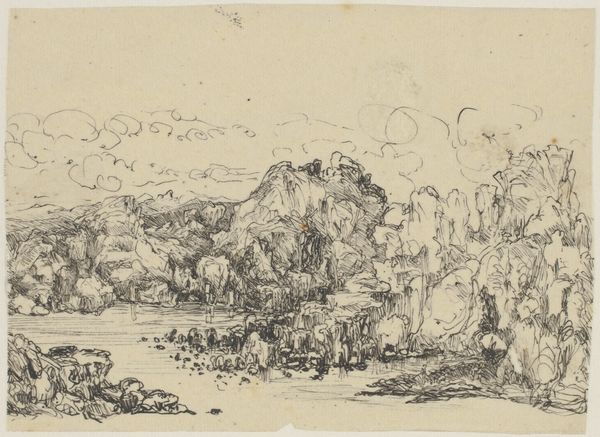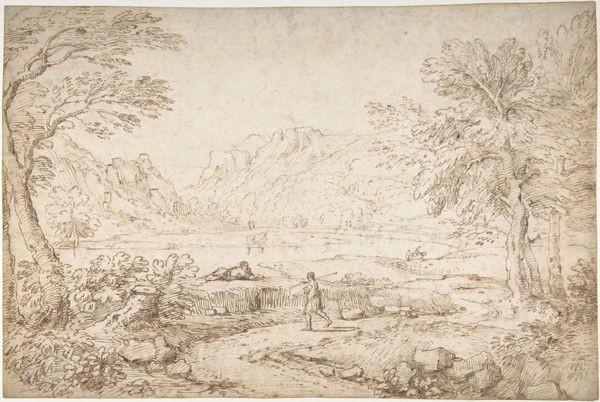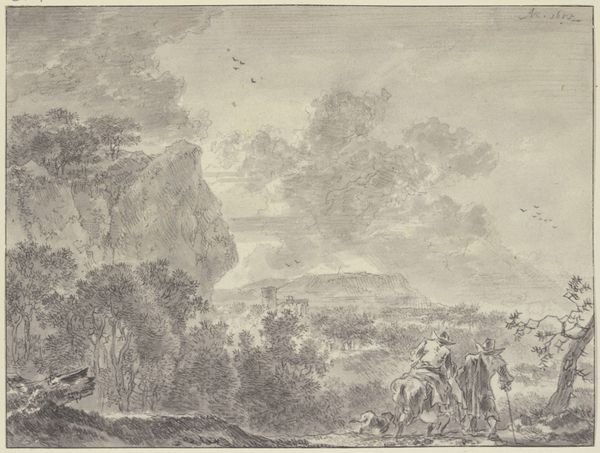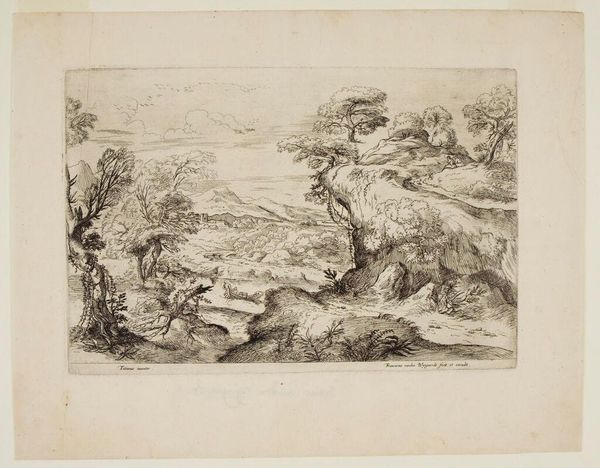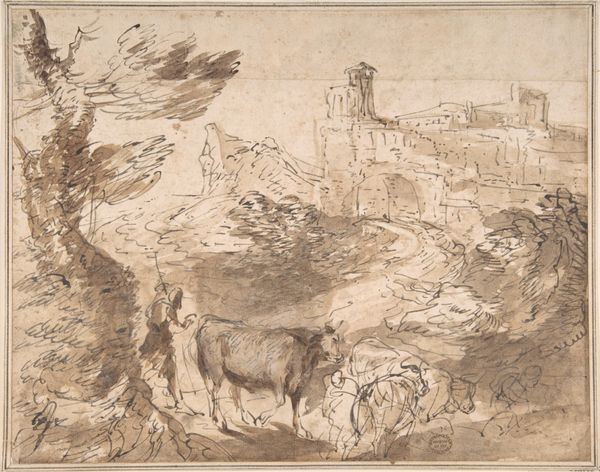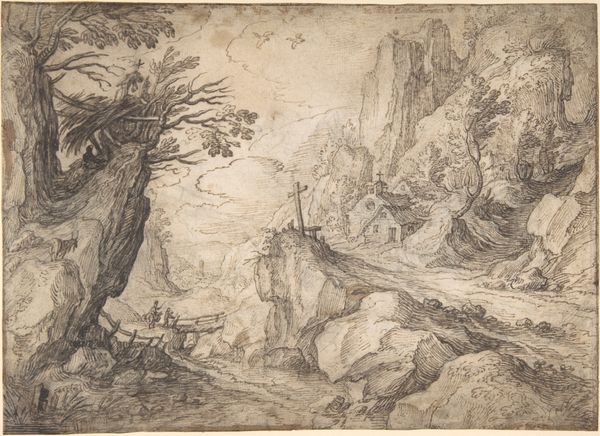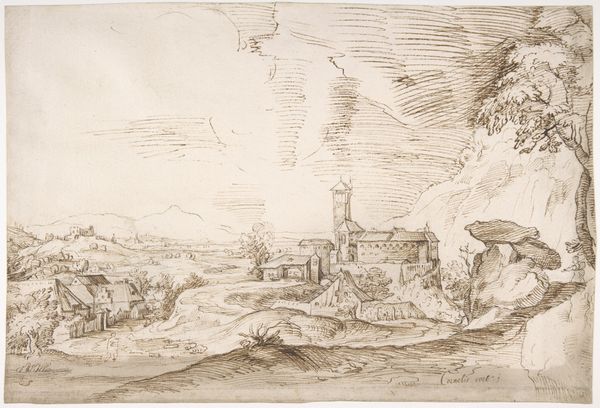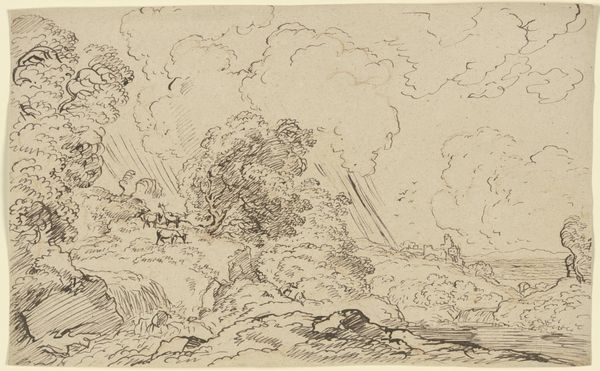
Eine Kuh, eine Ziege und ein Schaf beieinander in einer bergigen Landschaft liegend
0:00
0:00
drawing, pencil, chalk
#
portrait
#
drawing
#
baroque
#
landscape
#
pencil
#
chalk
#
pen work
#
sketchbook drawing
Copyright: Public Domain
Editor: This drawing by Nicolaes Berchem at the Städel Museum depicts "A Cow, a Goat, and a Sheep Together in a Mountainous Landscape," rendered in chalk and pencil. I find the composition rather striking, especially how the animals are nestled within this hazy, almost dreamlike setting. What elements of its structure stand out to you? Curator: The density of line and the tonal variation. Berchem masterfully employs hatching and stippling to build form. Note how the pressure applied to the chalk and pencil varies, creating a subtle play of light and shadow that defines the contours of the animals and the landscape. The composition itself lacks a strong central focus, diffusing attention across the scene. Do you agree? Editor: Yes, it's as if Berchem invites your eyes to wander. Is there significance in the textures, for instance, the rough strokes for the foliage compared to the softer rendering of the animals’ fur? Curator: Precisely. That juxtaposition creates a tactile quality. Consider also how the landscape is rendered in broad, almost gestural strokes. Observe how the artist’s touch varies dramatically. It suggests a hierarchy of importance. The animals, clearly the subjects of the work, receive a higher degree of refinement than their surroundings. Editor: That makes sense. So, in your opinion, is Berchem primarily concerned with representation, or is there an exploration of texture and mark-making at play as well? Curator: The distinction you draw is pertinent. While representation is undoubtedly present, consider also the autonomy of the marks themselves. Berchem doesn't just depict animals; he presents us with the very act of depiction. The drawing itself becomes a record of his engagement with line, form, and tonality. Editor: I see. So, in the end, it is more about the intrinsic qualities of the work rather than merely illustrating a scene. Curator: Precisely. The work is about its own making as much as the things depicted, if not more.
Comments
No comments
Be the first to comment and join the conversation on the ultimate creative platform.
